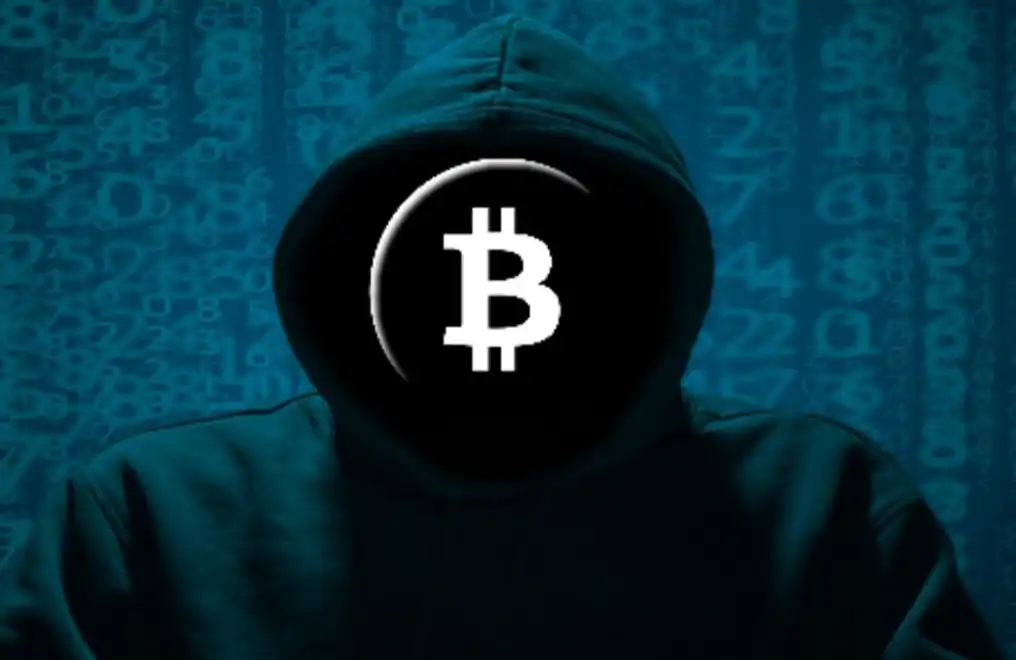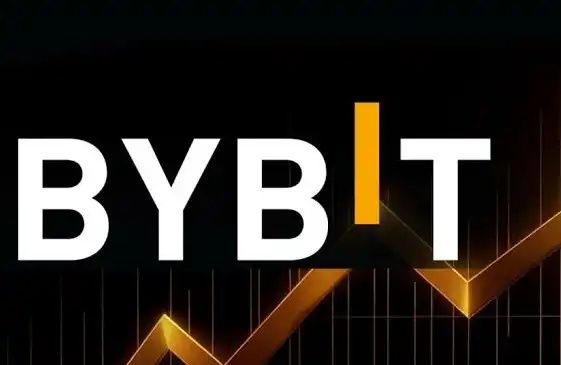TRUMP-attracted Cryptocurrency Outsider Investors, Are They Still Making Money?
Fast forward to January 17, with only two days left until the inauguration of the new U.S. pro-crypto president.
On this day, out of the blue, Trump, without any prior indication, suddenly announced the launch of a MEME coin named $TRUMP on his social media platform Truth Social.
In a matter of seconds, $TRUMP ignited the start of the 2025 crypto market, becoming the most bullish celebrity coin in history. Within 24 hours of its launch, it swiftly made its way onto top exchanges like Coinbase and Binance, with a trading volume surpassing $10 billion, more than three times that of Bitcoin's 24-hour trading volume.
Aside from conspiracy theorists, the forefront of the 24/7 meme coin trading circle were the earliest ones to profit from $TRUMP, even amidst suspicions of "the Trump official account being hacked." A group of people, represented by 0xSun, leveraged their years of on-chain data monitoring capabilities to swiftly act and buy early. Around the 10th minute of $TRUMP's launch, 0xSun began buying, investing $600,000 within half an hour at an average cost of only $0.6, resulting in profits exceeding $27.5 million, achieving legendary status in a single battle.

However, the MEME coin market is a typical zero-sum game with no technological innovation, fundamentals, or value creation. It only distinguishes between early and late buyers, so not everyone can be as fortunate as 0xSun. As the hype waned and Trump's wife's coin issuance indirectly caused dilution of $TRUMP, the price plummeted from a peak of $72 to currently hover around $17.
According to early statistics, the data of profitable addresses shows a clear normal distribution, with 560,000 addresses at a loss and only 300,000 addresses in profit.

Data Source: Dune
Even a PHD in Finance Couldn't Escape Being Bagged
The market isn't always friendly to everyone. KOHA is a prime example, being one of the 560,000 people trapped in their positions.
KOHA is a Canadian engineering PhD student, who occasionally dabbles in US stock investments. In 2024, he took a bet that Trump would win the presidency and bought shares of Trump's company stock DJT in advance, ultimately making a small profit. This success boosted his confidence in Trump's business model, leading him to mistakenly believe that $TRUMP coin would have long-term value like DJT stock.
However, the cryptocurrency market moves much faster than the US stock market.
At the time of $TRUMP coin's release, it was Saturday morning in Beijing time, but late Friday night in the US and Canada time zones. Like many locals who were resting, KOHA did not pay immediate attention to this event. By the time he learned about the $TRUMP release, it was already the next day for KOHA.
Due to Trump's frequent unfriendly policy adjustments towards the international student community, coupled with the close relationship between Canada and the US, KOHA, fortunately, was in an environment highly attentive to Trump's actions. The next day, KOHA learned about Trump's coin issuance in a student group chat when $TRUMP had already surged from its initial price to $28.
He immediately took action, attempting to purchase $TRUMP through the Moonshot platform, but due to identity verification, uploading his driver's license, and learning how to make the purchase, some time was lost. By the time he successfully bought in, the price had risen to $30. Nevertheless, he hesitated very little and decided to enter the market.
"The four-year term has just begun, and Trump's rule in this administration is very authoritarian. The US president can only serve two terms, so it is widely recognized that the second term is for making money, for doing business. Everyone in the world wants to do business with him, and $TRUMP serves as a pathway and threshold for that," KOHA's logic was straightforward.
In KOHA's view, the more people there are who want to connect with Trump through this means, the higher the price of Trump Coin will be. "This project is clearly much easier to manipulate than DJT, and there is no need to report to the SEC for sales. The total supply is 1 billion, with only 200 million in circulation, and 80% of the tokens are still held by himself. I immediately sold all DJT and bought $TRUMP coin."
KOHA is not the only investor who believes that Trump's business model can be replicated in the crypto market. In fact, many see Trump's $TRUMP issuance as part of his financial strategy.
“Trump cannot fit in, cannot merge, and he cannot even attempt to integrate. The rift between him and his daughter Ivanka is actually a clash between two financial ideological factions, a clash of capital that cannot even merge through blood ties.” KOHA analyzed, in his view, “the traditional financial market is controlled by the Jewish capital of Wall Street and the Democratic Party,” Trump has never been able to integrate into this system, and his only way out is to take a different path, leveraging the decentralized nature of cryptocurrency to establish his own financial order.
KOHA's understanding of the crypto industry is that of “unexpected beneficiaries of a clash of capital.” Trump indeed has shown a friendly attitude in terms of policy: loosening cryptocurrency regulations to provide a more open trading environment; Bitcoin breaking through $75,000, ushering in a crypto bull market frenzy; Republican lawmakers pushing for the establishment of a Bitcoin strategic reserve, further boosting market confidence. All these factors have given KOHA a grand investment narrative, making him believe that $TRUMP is a long-term asset.
Seeing that $TRUMP has been on a continuous upward trend, KOHA once again added to his position at $40. However, by the following Monday, two days later, $TRUMP had transitioned from the FOMO (Fear of Missing Out) phase to the profit-taking phase. With decreasing market liquidity and fewer buy orders, KOHA’s coins gradually became trapped liquidity, with an average price of $36.
This Cycle Is a Game of Revealed Hands
Joining KOHA in the trap is also Li Yi.
However, unlike KOHA, who is inexperienced in the crypto world and unaware of the major crypto exchanges, Li Yi has been navigating this market for a while. Compared to newcomers who are not even familiar with trading platforms, Li Yi at least knows where to trade and understands that the logic of the crypto world is not important; emotion is the sole deciding factor. Li Yi lurks in various pump-and-dump groups, always keeping an eye on market dynamics, closely following some self-proclaimed “old-timers” in the crypto world for trading.
He did make some money.
During the early price action of $TRUMP, he managed to buy in at the low of $17 with his “follow even without wisdom” strategy, and successfully sold at a high price after the surge, making a profit. However, after making money, he became somewhat overconfident.
Instead of exiting after making money, Li Yi began searching for the “next $TRUMP.”
Sure enough, the Trump family did not disappoint Li Yi. Just two days after the release of Trump Coin, Melania Trump Coin ($MELANIA) was launched. At the same time, in cryptocurrency trading groups, the concept of "family coins" began to gain popularity.
Although not officially endorsed, the name of Trump's youngest son Barron, under the banner of the "Trump family," amidst the sharp rise in $TRUMP's price, touted the "Future President Coin." There were even rumors in the community that Trump's family nanny had also issued a coin, quickly attracting a wave of funds. And Li Yi happened to be one of them.
Naively, he believed that the logic of these coins was the same as $TRUMP and that they could skyrocket like $TRUMP. Therefore, he invested most of his profits in the First Lady Coin and Son Coin.
But the market did not give him a second chance.
The rest of the family coins quickly went to zero, Li Yi's principal was locked up, and the profits evaporated instantly. Currently, he has begun to inquire about how to buy World Liberty Financial (WLFI), the decentralized finance project of the Trump family, attempting to recover his losses through a new speculative project. "Let's take another gamble; WLFI may be able to continue the legitimacy of Trump Coin," Li Yi said.
In this cycle, the most significant change is that everyone has laid their cards on the table.

No longer needing packaging, no longer needing to pretend to be a project with technological innovation, and certainly not needing to spend $5000 to hire a hitman to write a high-end English whitepaper, piling up a bunch of obscure new concepts.
The play in this bull market is straightforward and crude—directly hype up emotions, celebrities, topics, and cognitive dissonance. Utilizing the FOMO emotion, a series of new meme coins are created, harvesting the fantasies of new retail investors.
In the past, new chain projects would still make a little effort, disguising themselves as projects seemingly with innovative significance. Looking back at the early days of BSC, Aptos, and Arbitrum launches, the market witnessed the same scene—a swarm of anonymous "innovative project factories" rushing in, exploiting the new chain effect to harvest TVL and users. Once the market hype subsides, they simply shut down the community and website, disappearing with the funds.
Behind these projects are often a group of familiar faces, just under a different guise, changing a few lines of code to become the new hot coin. They were initially the first wave of popular projects on a new public chain, anonymous, mysterious, without well-known investors backing them, or audits by large companies, yet they were constantly praised by KOLs, leveraging the community's FOMO emotion to create wave after wave of wealth myths.
But now, the market seems to have reached another consensus: this is a new gambling table, a game of wealth transfer.
No one is talking about the "technological revolution" anymore, no one is talking about "changing the world" anymore, everyone understands tacitly—this round is lost, just wait for the next game; if you are willing to gamble and lose, come on in, the crypto world is originally meant for this. It is said that even the gentlemen in Hangzhou's nightlife scene know it's time to short meme coins.
And Li Yi is just another participant in this game of wealth transfer.
Are Shorters the Real Winners?
Among the newcomers who entered the crypto world through TrumpCoin in this interview, the only one who made money and left was Professor L.
In the $TRUMP coin storm, most people were betting on a rise, desperately chasing highs, only to get trapped at the peak. However, some chose the opposite direction—shorting, and successfully profited against the market frenzy.
Professor L, a finance professor and a veteran futures trader. He has long studied market structure and knows well that cryptocurrency price fluctuations are far more volatile than traditional financial markets. As $TRUMP is a meme coin with no fundamental support, entirely reliant on market sentiment, it is likely to experience a sharp drop after a short-term surge.
However, his trading strategy is not a simple bet on the market's decline but rather a basic futures trading strategy of "hedging":
He bought $50,000 worth of spot to ensure he wouldn't miss out on the profit from an uptrend. At the same time, he shorted $10,000 5x leveraged $TRUMP contracts as a risk hedge. If $TRUMP continues to rise, his spot profit can cover the contract's loss. If $TRUMP crashes, his short position can make up for the loss and even bring in excess returns.
Professor L does not agree with many retail traders' gambling-like leveraged trades, "The essence of a contract is risk distribution, not profit amplification." But most people do not understand this principle.
At the same time, Professor L strongly agrees with Peter Lynch's view: "Big shorting funds do not short at the peak but rather after the market tanks, when retail investors believe the fall has stabilized and start buying the dip, shorting funds like to short at this position." This is why Professor L chose not to close his short position hastily amidst the rapid drop after $TRUMP's manic surge.
In crypto trading groups, there are always people boasting about their high-leverage records: "Today, I opened another 50x leverage short and made $2000!" "Longs got liquidated yesterday, and today I made it back with shorts!" But the truth is, this kind of strategy is ultimately gambling.
The success of Professor L stands in stark contrast to those retail investors who blindly use high leverage and gamble on their luck. The market's violent fluctuations, combined with high leverage, mean that an account can be wiped out in an instant with just one adverse price movement. Many retail investors went long with high leverage at the peak of $TRUMP, envisioning a continued price surge, only to be liquidated by the market reversal, resulting in a complete loss.
Ultimately, as the price of $TRUMP plummeted from its peak, Professor L's hedging strategy allowed him to steadily profit. Unlike 0xSun, who relied on frontrunning to reap profits, or Li Yi, who fell into the trap of FOMO sentiment, Professor L survived and consistently made money in the extreme cryptocurrency market by relying on rational risk management.
How Many Potholes Must Newcomers Step On in the Crypto World?
In this wave of Trump Coin frenzy, those entering the market are not just inexperienced newcomers but also many seasoned players from traditional investment markets. They have struggled in the A-share market, commodity futures, and even the tea speculative market, experiencing various capital games.
Professor L is fortunate, but not all veterans can replicate their past success in the cryptocurrency market based on their experience. In other words, they must stumble through many pitfalls before starting trading in the cryptocurrency world.
"A-shares surge briefly and plummet for a long time, speculating on small gains and differences is the way to survive." This is the consensus of many domestic stock investors, including "Pancake Brother." For a long time, the speculative style of A-shares has made them accustomed to short-term swing trading, picking up low-priced stocks, and playing with market sentiment.
When Pancake Brother saw a coin like $TRUMP with a strong speculative concept, he immediately felt familiar, thinking, "Isn't this just a highly controlled small-cap stock?" Therefore, he decided to "take a risk."
Pancake Brother, who bought over 4000 RMB worth of $TRUMP at $69 at the peak, tried to calculate the possibility of breaking even. As the price of the coin continued to fall, during an interview with BlockBeats, with the $TRUMP price at $26 per coin, if it rises by 5%, he would need to add 50,000 RMB to lower the cost price. However, he knew this was just a "cabbage-like fantasy."
After being trapped, Pancake Brother realized that the rules of the cryptocurrency market are much crueler than those of A-shares: "There are no circuit breakers, funds flow in and out without any rules to follow, whales can wash the market in an instant; there is no regulation, market makers can drain liquidity at any time, manipulating the market at will; there is no time window, with 24-hour trading, the market never sleeps, and retail investors have no breathing room at all." Pancake Brother, filled with emotions, can't help but complain endlessly.
Many investors who were used to short-term trading strategies in the A-share market not only failed to make money in $TRUMP, but also lost their principal in the end because they attempted to engage in swing trading, constantly buying and selling.
However, the cryptocurrency world is a ruthless place. After overcoming the challenges of transitioning from traditional stock trading to cryptocurrency trading, Pancake Brother found himself falling into another pitfall.
“I thought there was no hope of breaking even, so I was ready to cut my losses, only to realize that I had bought a fake coin,” Pancake Brother said. Before the spot market trading platform went live, he followed the operations of the senior members in the trading group and used a certain platform’s web3 wallet to make his first $TRUMP purchase.
Since he had never used a web3 wallet before, he had been relying on the group's quotes for guidance. After making the purchase, he did not check on it again until he was ready to sell, at which point he discovered that his funds had not entered the real market but had been consumed by a “fake coin contract” deployed by hackers.
And this was just one of the relatively straightforward ways of getting rug pulled in the crypto world; there were many more pitfalls awaiting Pancake Brother.
The mixed bag of cryptocurrency pump-and-dump paid groups is like boiling a frog in warm water. Initially free, they lured in newcomers using some female bloggers’ photos, screenshots of earnings, or pictures of cars and houses as bait. Inside, the senior members would enthusiastically teach beginners how to open accounts on trading platforms and how to trade, enabling them to earn a commission through referrals at this stage.
Using retail investors' funds to place orders and generate fees is considered mild; the most direct method is leading a group to participate in a scam. They claim to have “accurate insider information,” but in reality, it's a premeditated trap. Currently, the most common scam on Xiaohongshu (Little Red Book) is the so-called “quantitative robot trading strategy,” which allegedly achieves a monthly return of 30%.

However, the cryptocurrency world is a completely different realm. The game here is a high-frequency battle fought in “seconds,” where every missed second could translate into huge losses. To make matters worse, many veteran players, relying on substantial funds, often adopt a “big fund rebetting” strategy, only to become the target at the market “peak.” The market makers, who control the market, have long been prepared even before these “whales” entered, waiting for these “big fish” to take the bait and quickly absorb their funds.
In this unseen PvP confrontation, the flow of funds and market control always remain in the hands of a few. For players still stuck in traditional market thinking, the rules of the crypto world often catch them off guard. Here, risks and opportunities coexist, but more often than not, it's the risks that prevail.
When these seasoned players finally woke up, they found that not only had they not earned a huge fortune in the crypto world through years of experience, but had instead become a typical case of being "rug pulled" upon entering. The familiar rules of thumb were completely useless in the face of this brand new market,
and all of this was the tuition fee they had to pay when entering this industry.
欢迎加入律动 BlockBeats 官方社群:
Telegram 订阅群:https://t.me/theblockbeats
Telegram 交流群:https://t.me/BlockBeats_App
Twitter 官方账号:https://twitter.com/BlockBeatsAsia
 Forum
Forum OPRR
OPRR Finance
Finance
 Specials
Specials
 On-chain Eco
On-chain Eco
 Entry
Entry
 Podcasts
Podcasts
 Data
Data


 Summarized by AI
Summarized by AI








